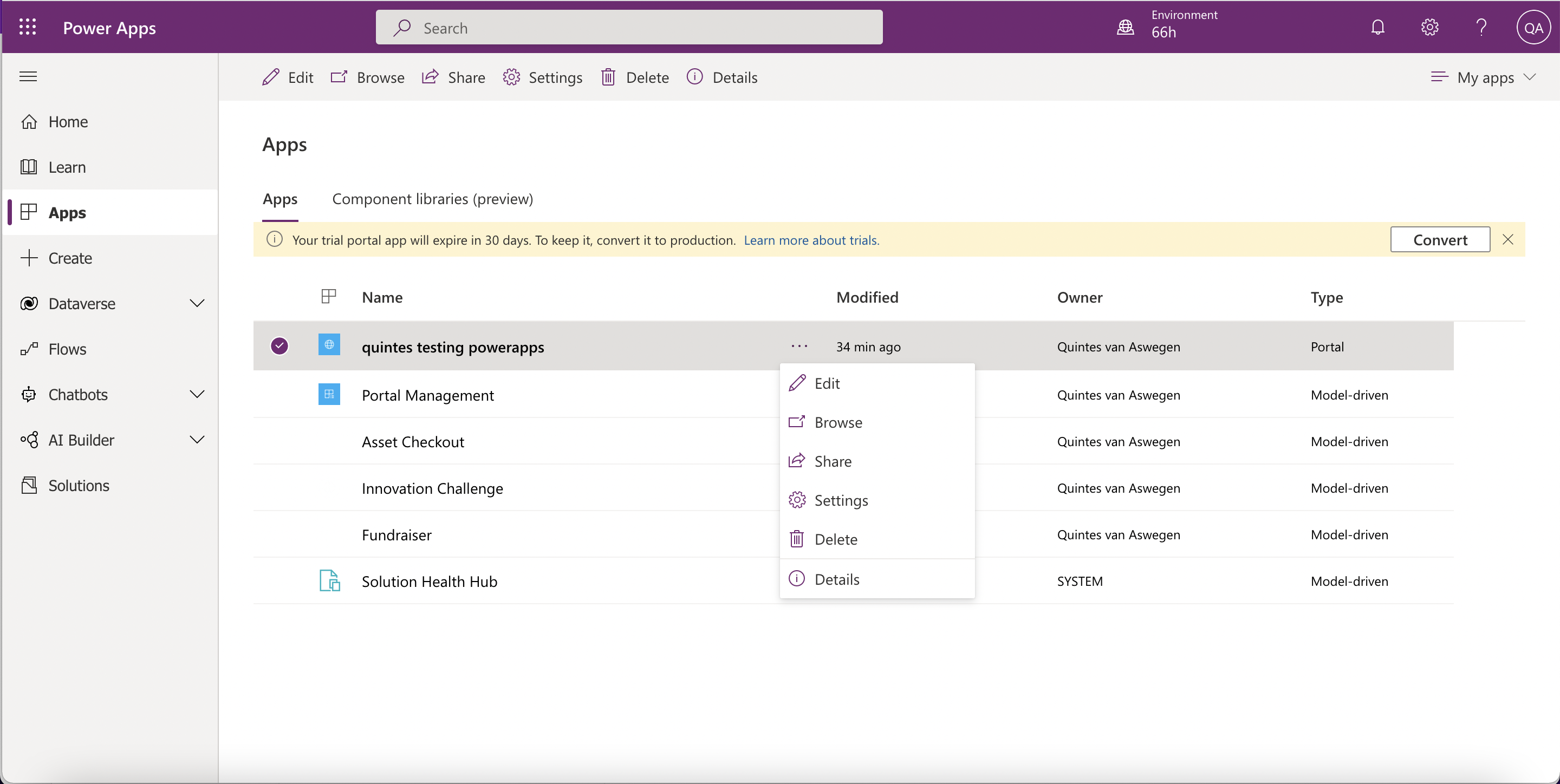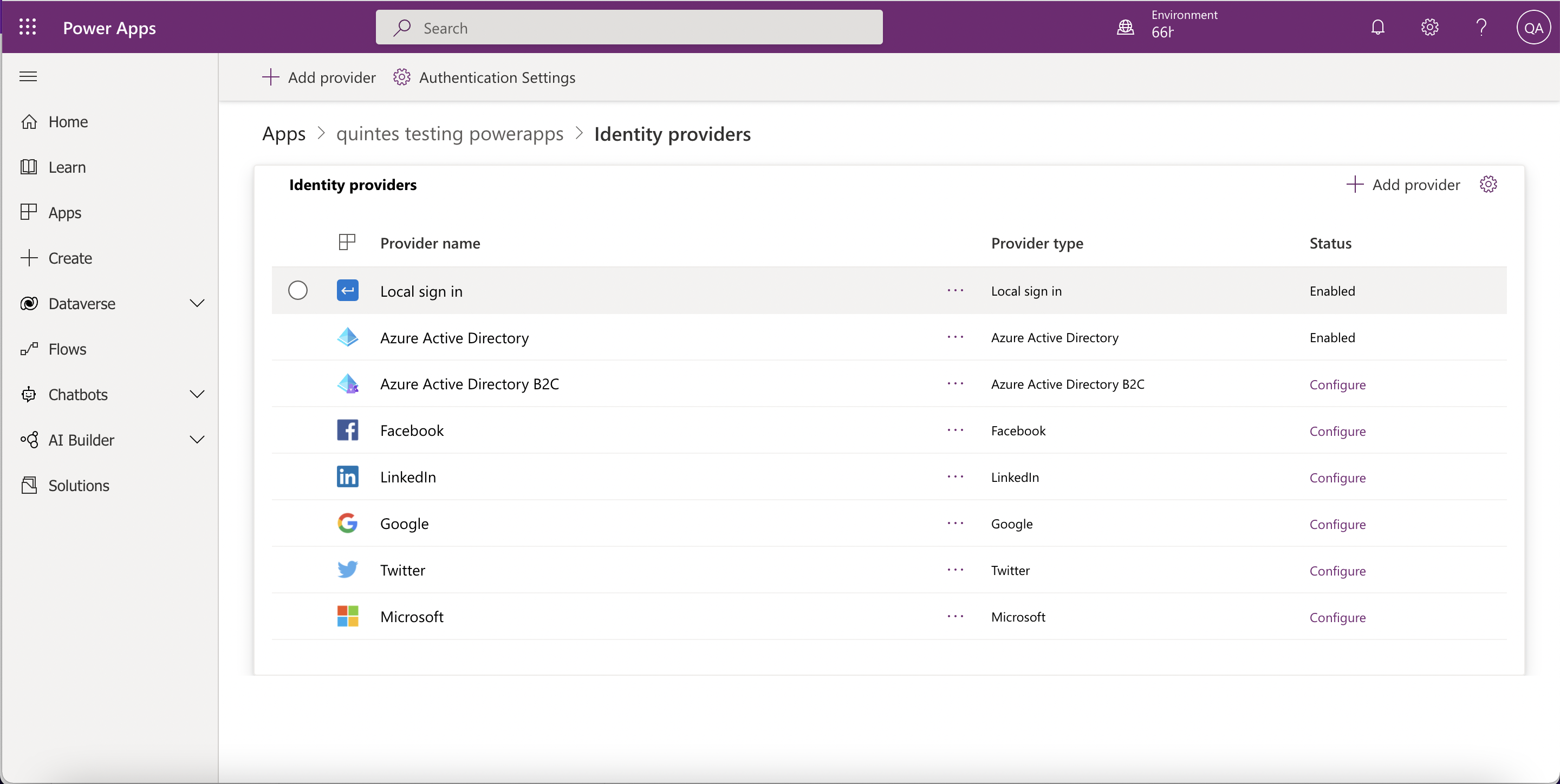Low code and no code platforms serve particular needs for businesses who need various apps built for internal purposes or even for external audiences. Let’s evaluate PowerApps very quickly and see what we can build.
Evaluation
Evaluating new technology is lots of fun, but can be challenging particular when you need to evaluate across functional, non-functional, security and data requirements. There is no shortage of platforms and technologies out there at the moment and knowing what a particular platform is going to offer sometimes requires you to timebox an introduction into the product documentation, and sometimes an evaluation to get a real sense of the opportunities a particular technology / platform may enable.
I do have an idea of how to build apps and experiences (community cloud) in Salesforce, and thought to see how quickly I could wire up a portal in Power Apps with external identities.
Scope
- External Identities in Azure B2C
- A simple power app which internal staff could use.
- A portal where external users could log in.
- evaluate Dataverse for standard and custom object definitions
Power Platform
Microsoft Power Platform offers a point-and-click approach to building custom applications, data visualizations, and automated workflows. This approach makes it easy for anyone familiar with Microsoft Office to create custom business solutions. Microsoft Power Platform is comprised of four key products: Power Apps, Power Automate, Power BI and Power Virtual Agents.[0]
Microsoft Power Platform offers three types of Power Apps: model-driven apps, canvas apps, and portals.
Microsoft Dataverse
Dataverse lets you store and manage data that’s used by business applications. Data within Dataverse is stored within a set of entities. Dataverse includes a base set of standard entities that cover typical scenarios, but you can also create custom entities that are specific to your organization.
Microsoft Dataverse is a cloud-based, low-code data service and app platform, which allows you to leverage the security and connectivity of Microsoft services. Dataverse connects easily to all aspects of Microsoft Power Platform so that you can fully control, automate, and strengthen your business. With standard tables and columns, as well as the ability to easily define relationships between your data, Dataverse was built for powerful, scalable solutions.
I think the use of Dataverse offers benefits to app builders so that they don’t have to rely on and wait for integrations but can rely on the common data model, dataverse object model and connectors supported by the power apps model driven, canvas and portals capabilities.
Setup
I created a Microsoft 365 Developer trial, then in my existing azure subscription I created a new External Identities / B2C tenant for external authentication.
Having done this, I found I need to set up particular settings in the B2C user flow to enable /tfr which is according to the documentation, as I was getting errors before having done this.
Here’s how it looks
Landing page -

Portal creation

Identity Provider setup

External Identities B2C setup in azure

Basic portal up and running! I had to configure a little more to get it going.
Summary
In less than 2 days I managed to create the Power Apps app for a specific use case, and while it is crude it proves that I can provide the functions that internal staff would need as well as enabling customers / clients to access those same tables / data and views from a portal, all secure and with appropriate permissions. I could spend more time on it but that would not add any further value other than continued learning, as this is an evaluation only there is a need to stop, and think about what further aspects would require evaluation.
I found that creating the portal was easy, and while very basic looking it would be functional for those without the budget for any further customisation or tweaking of look and feel.
The table permissions and security model appears solid, in terms of securing pages, views, forms and the underlying data and in particular rights to read, create, edit, append etc. I did have trouble setting permissions for a custom table and related views to contact, but I appear to have sorted it out.
I was able to create the dataverse database easily, and create the 2 tables linked via lookup to contact and related tables. Thank goodness for a grounding in this from Salesforce, which helped me fast track this in Power Platform and Dataverse.
I can’t wait to try out the power automate and power virtual agents, as well as the Dynamics functions and features if time allows.
Let me know your thoughts on the platform and if you have found it easy to use.
[0] https://docs.microsoft.com/en-us/learn/modules/introduction-power-platform/2-what-is-power-platform
